 |
 |
 |
| |
Alisporivir, a Host-targeting Antiviral, in Combination with Peg-IFNα2a and Ribavirin Results in Superior SVR and No Viral Breakthrough in HCV Genotype 1 Treatment-naïve Patients of IL28B CC Genotype: Results from the Phase IIb ESSENTIAL Study
|
| |
| |
Reported by Jules Levin
22nd Conference of the Asian Pacific Association for the Study of the Liver · February 16-19, 2012 · Taipei, Taiwan
Bin Li,1 Joke Snoeck,2 Yanhua Tang,1 Christopher T. Jones,1 Weibin Bao,3 Jing Yu,1 Yali Li,1 Anne-Mieke
Vandamme,2 Gregoire Vuagniaux,4 Kai Lin1
1Novartis Institutes for BioMedical Research, Inc, Cambridge MA, USA; 2Rega Institute and KU Leuven, Leuven, Belgium; 3Novartis Pharmaceuticals, East Hanover NJ, USA; 4Debiopharm SA, Lausanne, Switzerland
"No difference observed between GT1a and 1b: 1/43 GT1a and 5/172 GT1b patients had VB while on full dose of ALV"

Abstract
Background: Alisporivir (ALV) is an oral pan-genotypic, host-targeting antiviral in Phase III development. In the phase IIb ESSENTIAL study, ALV in combination with Peg-IFNα2a/ribavirin (ALV/P/R) achieved 100% SVR in HCV genotype (GT) 1 treatment-naïve patients of IL28B CC genotype in the response-guided treatment (RGT) and ALV/48weeks arms. This study examines the occurrence of viral
breakthrough (VB) and genotypic resistance in patients of different IL28B genotype.
Methods: HCV sequencing was performed with population sequencing and confirmed by clonal sequencing analysis. Phenotypic analysis of NS5A clinical isolates was performed using a GT1b replicon shuttle vector.
Results: In this study, ALV/P/R improved SVR in GT1 treatment-naive patients of all IL28B genotypes, with 100% SVR in the RGT and ALV/48weeks arms in CC patients, most frequently seen in Asian population. 67% of CC patients qualified for shortened treatment. Among ALV-treated CC patients, no VB occurred (0/42). Overall, 6/215 (2.8%) ALV-treated patients experienced VB; the majority were associated with P/R dose adjustment/stoppage and/or suboptimal ALV exposure. D320E in NS5A domain II was seen in 3 patients. However, phenotypic assays demonstrated only ~3-fold decrease in susceptibility to ALV, suggesting emergence of D320E or viral resistance is not the primary cause of VB. In addition, the majority of patients carrying resistance mutations to direct-acting antivirals at baseline achieved SVR.
Conclusions: In the ESSENTIAL study, ALV/P/R resulted in 100% SVR and no VB in GT1 treatment-naïve patients of CC genotype, with nearly 70% of them eligible for shortened therapy. ALV has the potential to be an essential component of HCV treatment, especially in the Asian population.
Introduction
· Alisporivir (ALV) is an oral antiviral targeting host proteins, primarily cyclophilin A, that are essential for HCV replication
· ALV demonstrated pan-genotypic anti-HCV activity in vitro and in vivo
· Unlike DAAs, the host-targeting MoA suggests a low likelihood for
emergence of specific drug resistance mutations
· In the PhIIb ESSENTIAL study with GT1 treatment-naïve patients, the addition of ALV to P/R improved SVR
rates in patients across all IL28B genotypes (Figure 1)
· The SVR rate was 76% in the ALV/48wks arm vs 55% in the control arm (p<0.01) despite of a lower percentage
of CC patients (19% vs 33%) in the ALV/48 wks arm relative to SOC

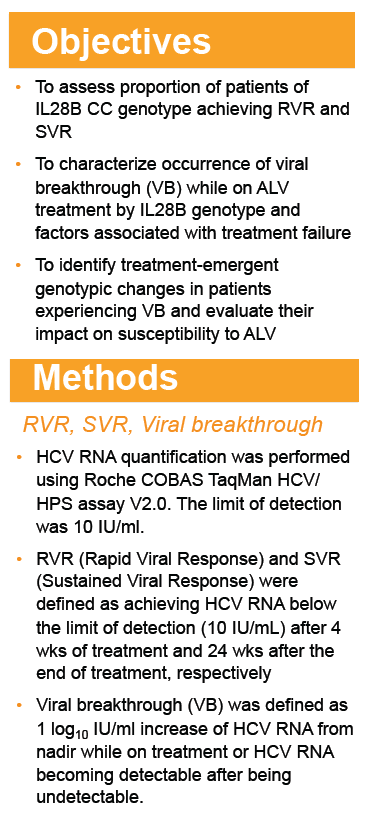
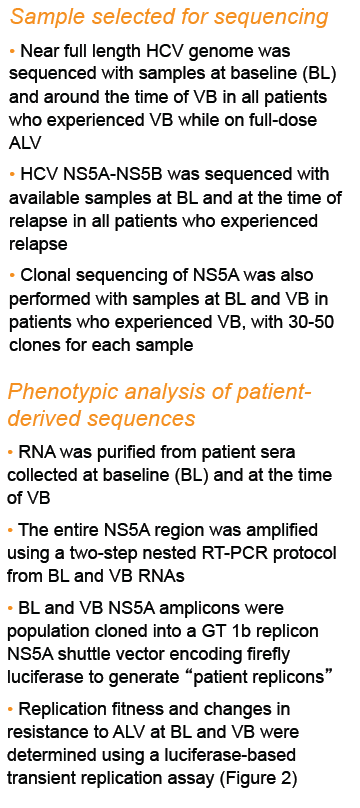
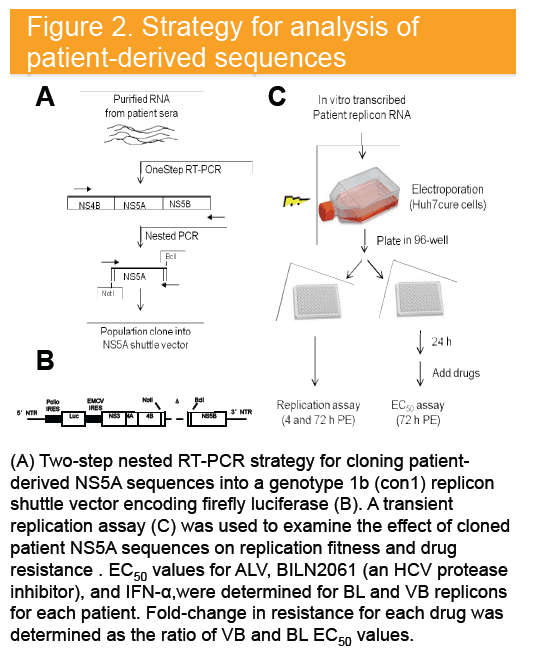
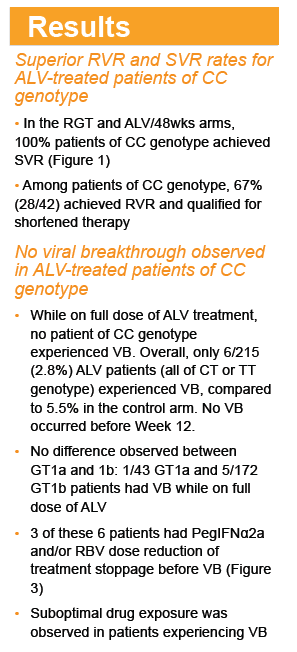
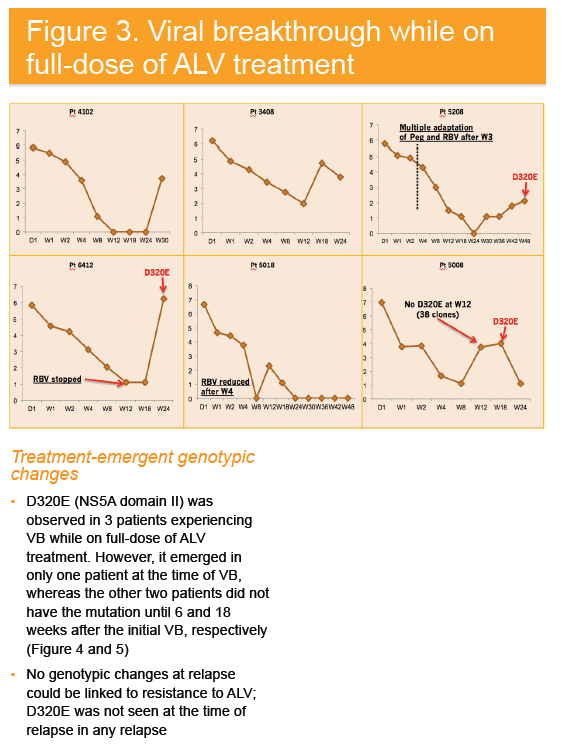
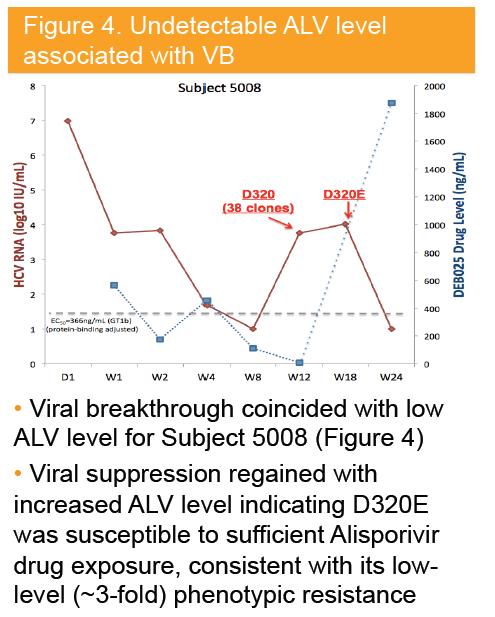
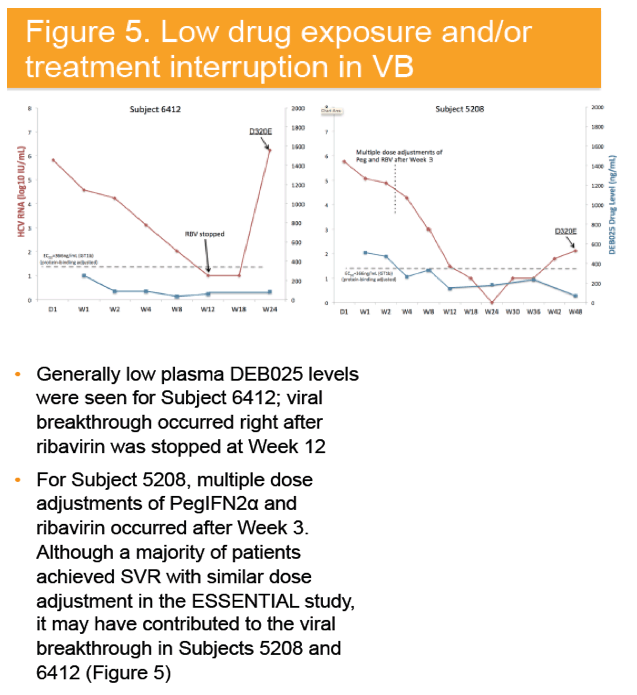
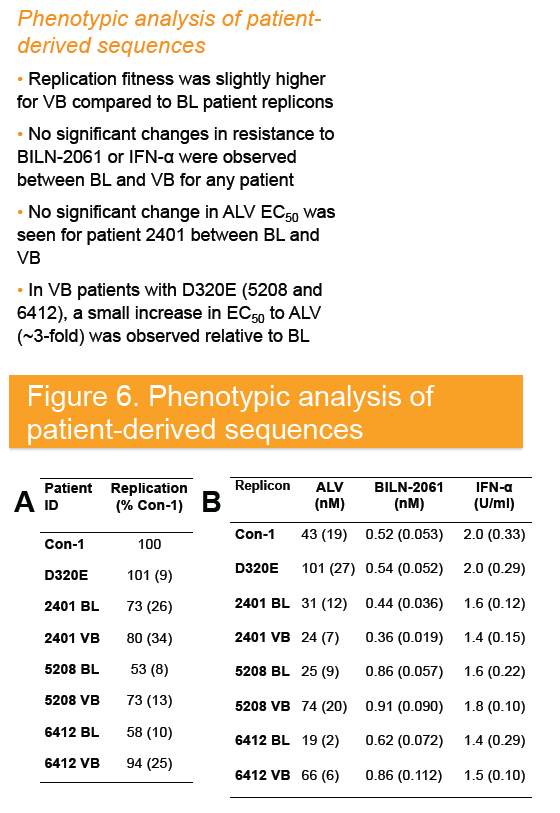

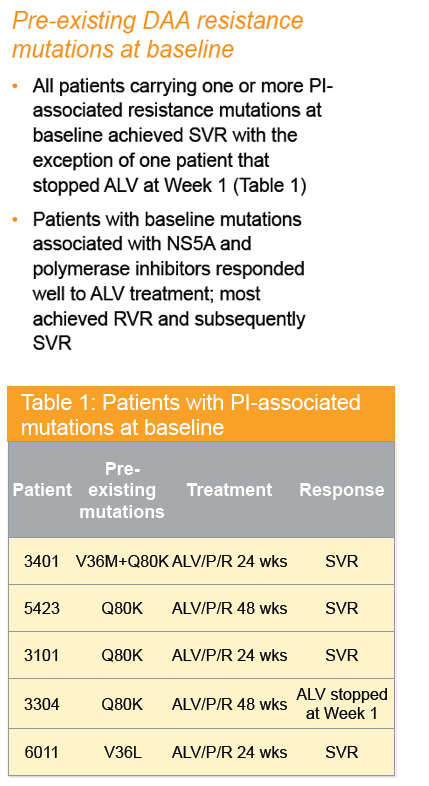
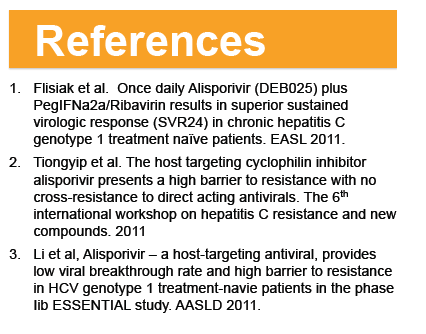
|
| |
|
 |
 |
|
|